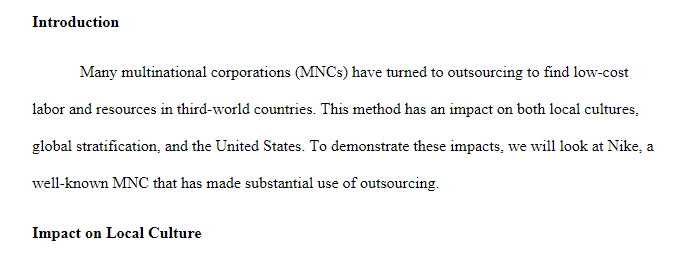Target a multinational corporation/international company and the practice of “outsourcing” to third world countries
Target a multinational corporation/international company and the practice of “outsourcing” to third world countries. Some examples of MNCs (multinational corporations) would be Nike, General Motors, Ford, Microsoft, and Fender Music. Research its effects on local culture. Write a summary and analysis of 500-750 words and include the following:
- How does global stratification impact local culture? What are the positive and negative effects?
- How does global stratification impact the United States? What are the positive and negative effects?
- Who is the biggest “winner” in this situation? Explain.
Use the GCU Library to locate two to three academic sources to support your content.
Prepare this assignment according to the guidelines found in the APA Style Guide, located in the Student Success Center.
You are required to submit this assignment to LopesWrite. A link to the LopesWrite technical support articles is located in Class Resources if you need assistance.
Target a multinational corporation/international company and the practice of “outsourcing” to third world countries
